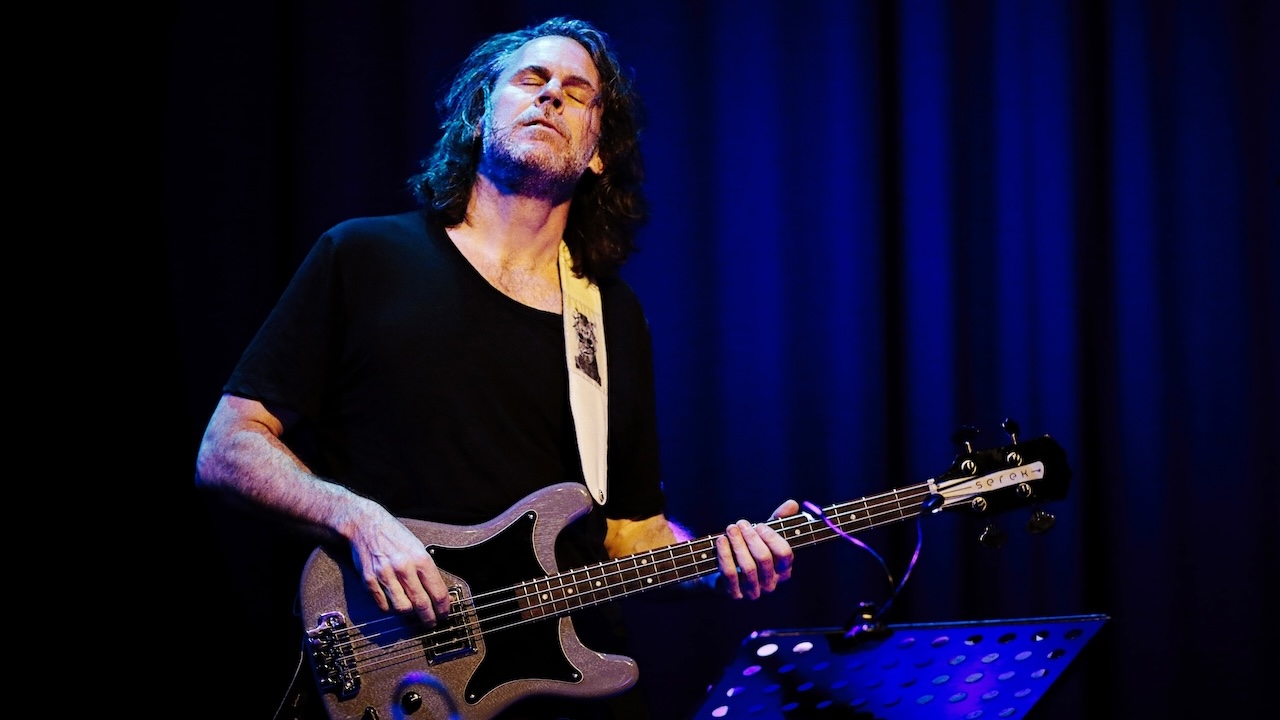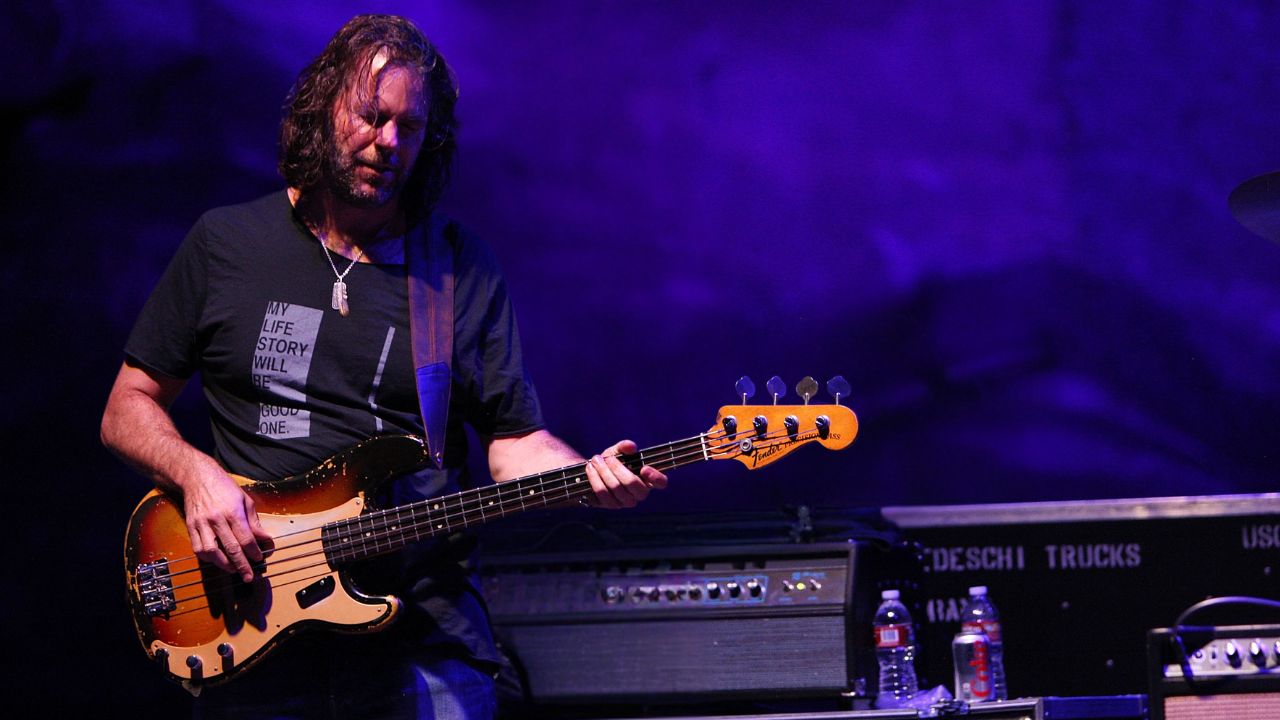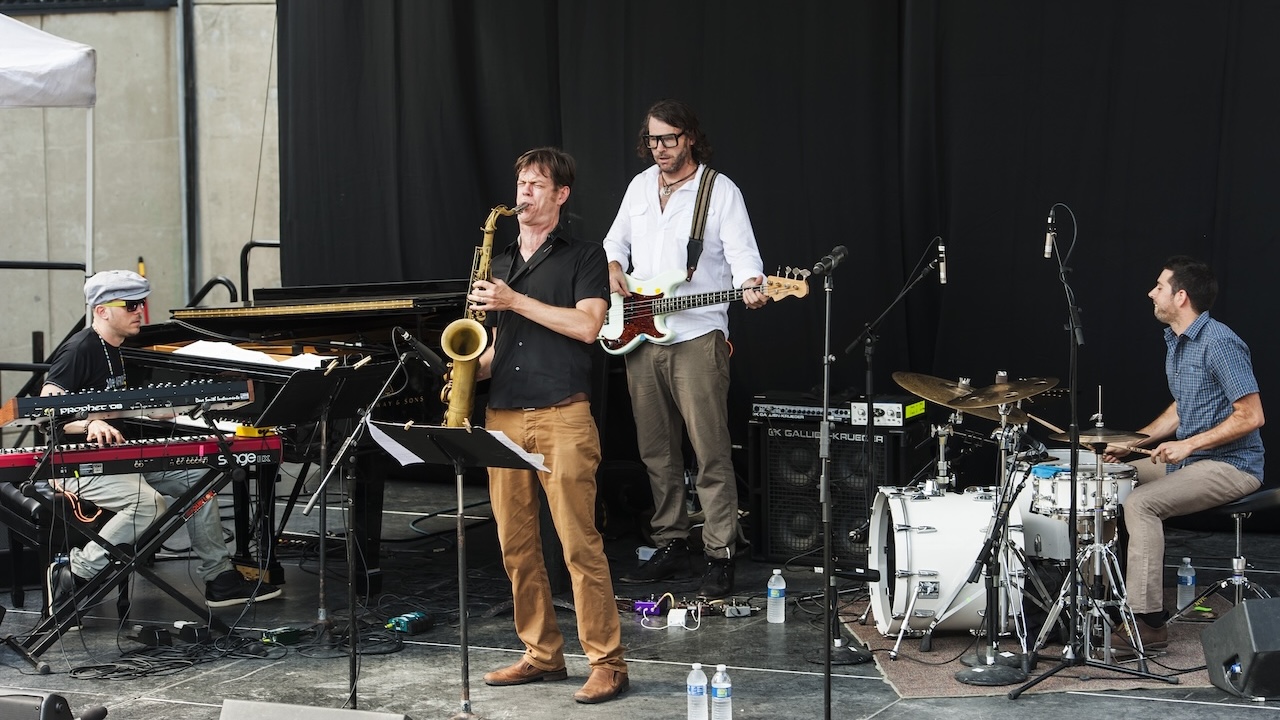
The death of David Bowie on January 10, 2016, was a major loss for the music world and the creative arts overall. Like Miles Davis in jazz, Bowie's drive to constantly reinvent himself led to much innovation in the rock and pop realms (not to mention film, fashion, theater, and other media). Along the way, the U.K. native left a considerable low-end legacy in his music.
The roughly two-dozen bassists who recorded with Bowie range from session players like Herbie Flowers, Willie Weeks, and Tony Levin, to band members who made important road and studio contributions, such as Trevor Bolder, George Murray, Carmine Rojas, and Gail Ann Dorsey, to bass-playing producers Mark Plati and Bowie's longest-running foil, Tony Visconti.
Bowie's final album, the Visconti-produced Blackstar, added another forefront name to that list in Tim Lefebvre. The veteran of Wayne Krantz's trio and Tedeschi Trucks Band was also a member of saxophonist Donny McCaslin's acclaimed quartet, with drummer Mark Guiliana and keyboardist Jason Lindner.
While collaborating with the Maria Schneider Orchestra in 2014 for his song Sue (Or in a Season of Crime), Bowie met McCaslin, who was one of the track's soloists. Having checked out McCaslin's album Casting for Gravity, Bowie went to see the quartet at 55 Bar in New York's Greenwich Village, leading to the unit's pivotal role as the backing band on Blackstar.
“Working with David was great,” Lefebvre told Bass Player back in 2018. “He was very hands-on and warm and witty – he told me he liked the Tedeschi Trucks Band. Still, when I first heard his voice in my headphones, there was that moment of, ‘My God! I'm recording with David Bowie!’ He meant a lot to so many people, and it's a real honor to be a small part of his legacy.”
The track that perhaps best captures the quartet's magic and Lefebvre's deep-pocketed creativity is Lazarus, the first single from the album, and also the name of Bowie's Off-Broadway play.
Having previously received a demo of the song (for which Lefebvre made his own basic chart), the quartet ran the tune down to check the form, and then cut live to Bowie's scratch vocal. Lefebvre would later overdub his intro part and Bowie later added his final vocal and the guitar power chords.
Given the direction to use a pick, Lefebvre got to sculpt his sound, with the guidance of Visconti. He played his '68 Fender Precision, with DR Strings flatwounds (which he muted with his palm) and a Dunlop .73mm pick.
He recorded direct via an Avalon DI and through his Yamaha EM-80 mixer into an Ampeg B-15 cabinet. Additionally, he kicked on his Boss OC-2 Octave for the song's bridge, and later overdubbed two “808 drops” using the pedal.

Lazarus begins with eight overdubbed measures of Lefebvre's upper-register improvisation. “At the end of the track, we started improvising, and they liked the vibe of what I was doing, so they asked me to do it as the intro, too.
“The inspiration was this band that I'm into, called Fink. The singer-guitarist, Fin Greenall, plays in DADGAD tuning, which creates cool suspensions of 2nds and 4ths against the root. That's what I'm doing here, adding color tones against the harmony. There aren't really chords behind me in the intro, but you can hear them in the outro.”
Lefebvre soon settles into the bassline from the demo, adding embellishments to get to the target notes and make the part his own. “I'm channeling people like Justin Meldal-Johnsen, Carol Kaye, and especially Dave Richmond on Serge Gainsbourg's album Histoire de Melody Nelson.”
Lefebvre continues the part through the first verse, (dig the subtle string bend at 01:28), the sax-led transition at 01:33, and the third verse. The song's bridge or B section kicks in at 02:43.
Again, the demo included the basic shape of the bassline and the use of the 3rd in the D-chord measures, but Lefebvre (after stepping on his octaver) adds rhythmic motion by matching and playing off Guiliana's kick drum.
The return to a verse finds Bowie singing more bluesy, to which Lefebvre reacts by getting noticeably more improvisational. He maintains this trend through McCaslin's solo at 04:12, as he gets busier within his reactions to both the sax and to Guiliana's more active kick (catch the cool sequence at 04:54).

“The key is to go for a percussive sound and sit squarely in the pocket; Mark tends to play in the center of the beat, and I focused on locking with his kick drum. I played mostly downbeats with the pick, anchoring the side of my pinkie on the body below the G string and muting the strings with my palm.”
At 05:26 Lefebvre returns to the intro figure, revealing that at 05:33 his first three notes echo the song's sax part. He settles on an A to ride out the track, while Bowie's power chords ring out.







